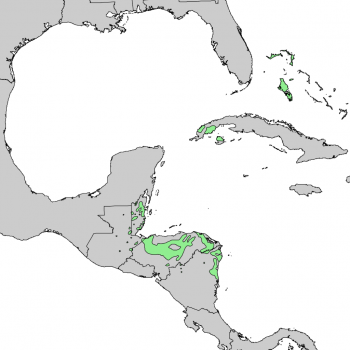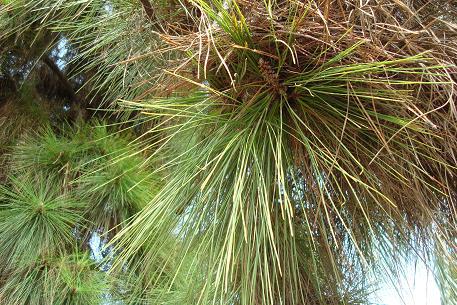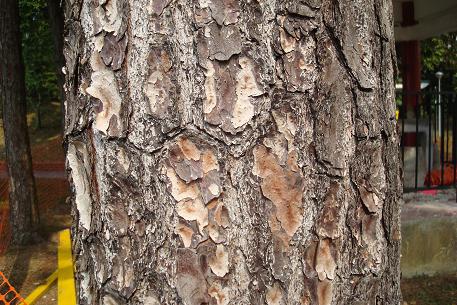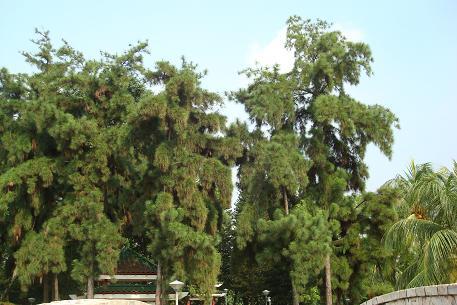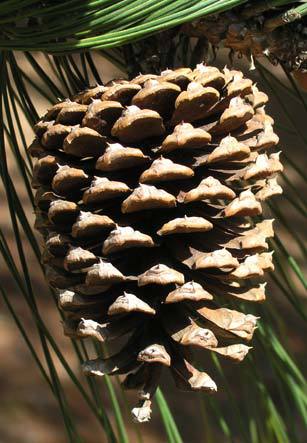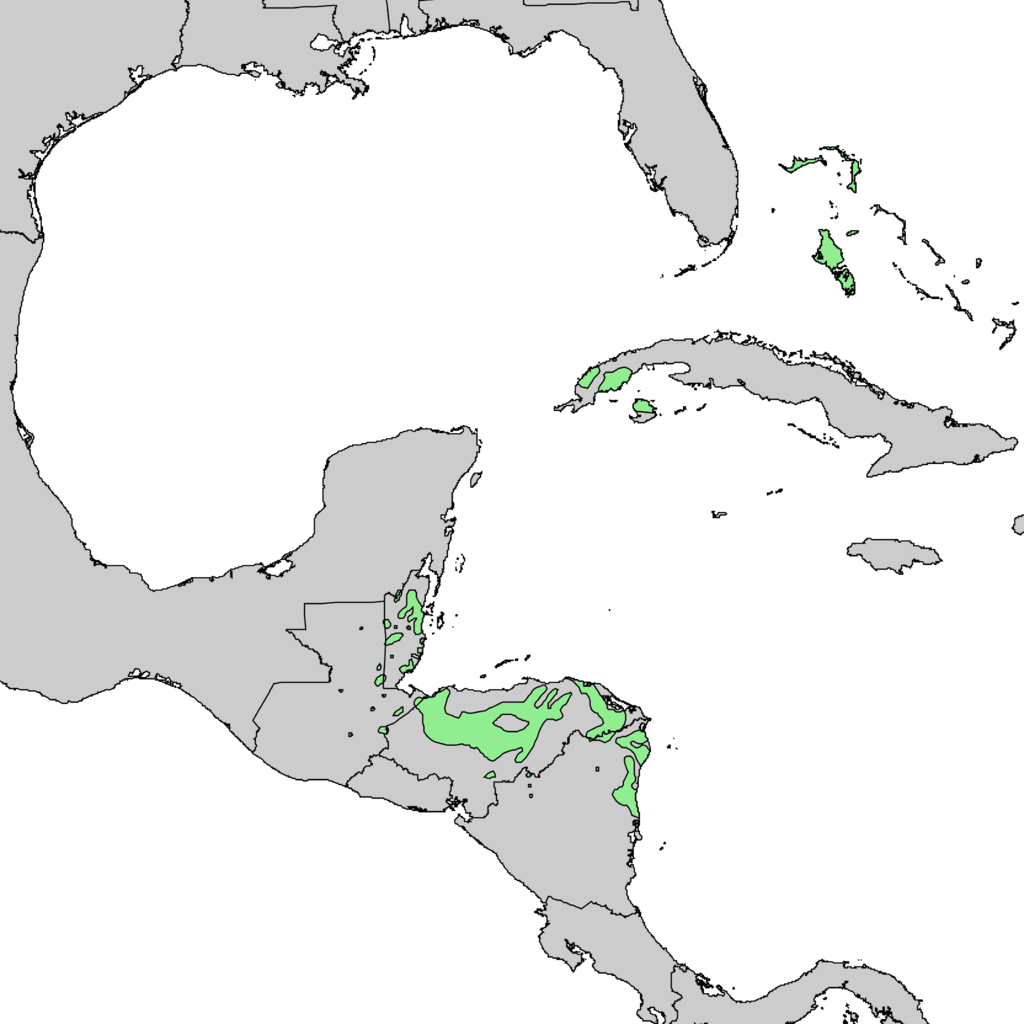subgenus Pinus, section Trifoliae (Duhamel), subsection Australes (Loudon).
Pinus caribaea, first described in 1851 by Pierre Marie Arthur Morelet (26 August 1809 - 9 October 1892), is commonly known as Caribbean pine as well as Pino macho in the Spanish language and Huhub in the indigenous Mayan language. This species is common across the islands and coastal countries of the Caribbean sea, hence the species name.
Ethnobotany. This is an important timber tree along its native range and is widely exploited. Although the species is not necessarily threatened, this history has likely reduced genetic diversity within the taxon.
Description. Caribbean pine is an evergreen coniferous species of tree that grows to mature heights of 65 to 100 feet (20 - 35 m) with a single, round, slender, erect trunk up to 20 to 40 inches (50 - 100 cm) in diameter, measured at breast height. Mature trees form an irregular crown with a crown depth comprising 25 to 33% of tree height.
- First-order branches slender and ascending, later ascending to drooping,
- Inner bark is colored red-brown, rough textured, scaly, and fissuring into irregularly square plates. Foliar units in dense, irregularly spaced tufts.
- Leaves (needles) are borne in fascicles of 3, (sometimes 2 or 4), measuring 6 to 10 inches (15 - 26 cm) long and 0.056 to 0.072 inch (1.4 - 1.8 mm), growing slightly rigid and twisted. Needle texture is serrulate, acute-pungent. Color is light to dark green, with stomata on all faces. They persist up to 3 years on the tree. Fascicle sheaths are persistent, 0.5 to 0.8 inch (15 - 20 mm) long at first but weathering shorter.
- Pollen cones are borne clustered at base of new shoots (often several nodes in a single season). They measure 0.8 to 1.6 inches (20 - 40 mm) long, colored pink or yellow.
- Seed cones grow subterminal on the branch, often produced along several nodes in one season, usually in pairs or whorls of 3 to 5 on 0.8 to 1 inch (2 - 2.5 cm) long peduncles. They mature after 2 years and open soon after Cones are ovoid-conical shaped, fairly symmetrical, measuring 2 to 4.8 inches (5 - 12 cm) long and 1.6 to 2.4 inches (4 - 6 cm) broad when open, comprised of 120 - 200 seed scales with an umbo holding a minute, persistent prickle.
- Seeds are variable from light gray-brown to blackish colored, measuring 0.2 to 0.28 inch (5 - 7 mm) long and 0.1 to 0.14 inches (2.5 - 3.5 mm) wide , with a 0.4 to 0.8 inch (10 - 20 mm) long wing.
Distribution. This species is native to the Caribbean - in western Cuba, Pinar del Rio and Isla de la Juventud; in Mexico, southern Quintana Roo; in northern Guatemala; in Belize; in Honduras including Islas de la BahÃa; and in El Salvador.
Hardy to USDA Zone 10 - cold hardiness limit between 30° and 40°F (-1° and +4.4°C).

